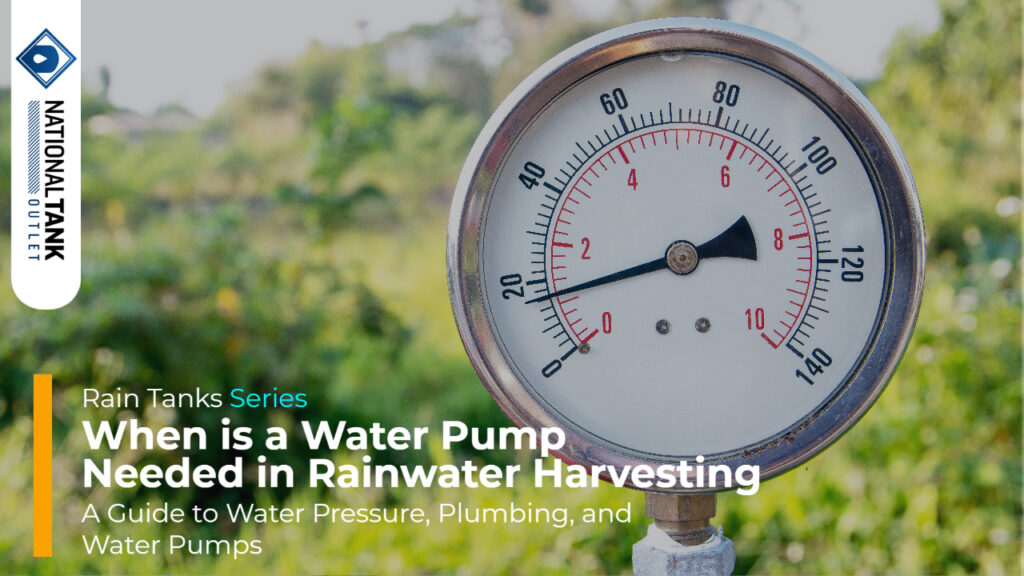
For many homeowners and small businesses, a common question with rainwater harvesting practice is whether a water pump will be needed or not. Rainwater harvesting can be defined as the collection, storage, and use of precipitation, and with the right equipment, can be used for all the water needs on a home, farm, or business.
A water pump is used to increase the speed and water pressure rating of water as it moves through plumbing such as hoses or pipes. In rainwater harvesting, water pumps are often recommended so collected water can be used more effectively and, in many cases, they are required.
In general, a water pump will be required for any application or equipment that would normally use the mains or municipal water supply but is being replaced with a rainwater supply. Common examples include taps and spigots, appliances, watering tools, and irrigation systems. Therefore, when planning a rainwater harvesting system, especially larger volume systems, you should include a water pump in the overall plan and cost estimates.
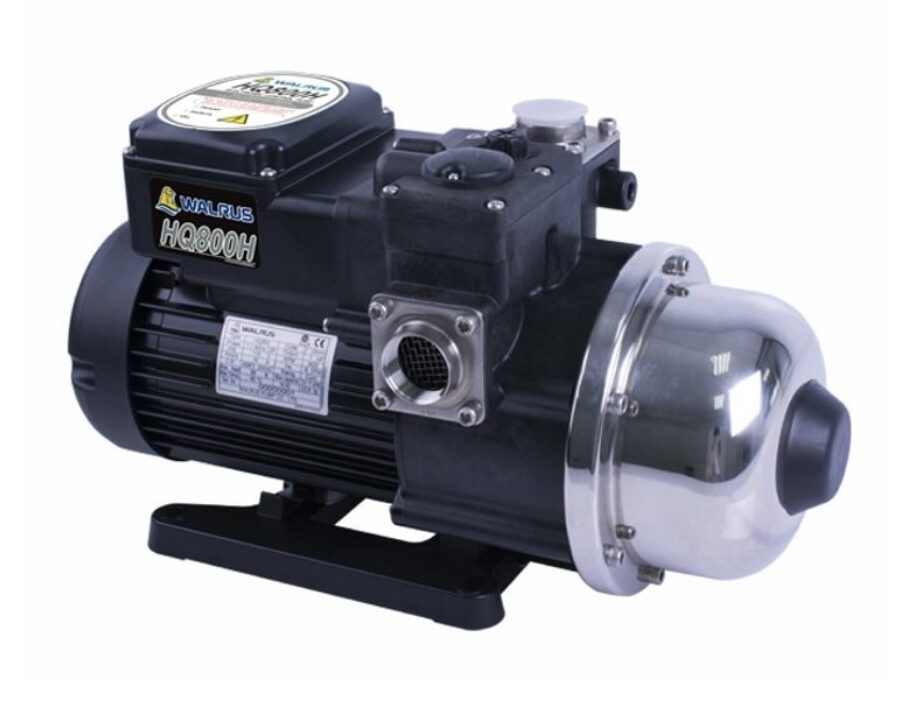
In short, if your rainwater use needs pressure, buy a water pump.
Guide Overview
In this guide, we will take an in-depth look into concepts of what is water pressure, flow rate, what can be done to increase water pressure, the water pressures needed for many common applications and equipment such as hoses, sprinklers, washing machines, etc., and cover when a water pump is needed and not needed when practicing rainwater harvesting.
A Dive into Water Pressure and How it Relates to Rainwater Harvesting, Rain Barrels, and Cisterns
Water pressure is an important concept when it comes to actively using the rainwater collected in rain barrels or cisterns from precipitation events. Pressure is required to make water flow through pipes or hoses, and this pressure must be greater on one side versus the other. Water will not flow without pressure or if the pressure is equal on both sides.
Gravity can cause water to flow downhill if free, and atmospheric pressure can be enough to cause water to flow through plumbing from an area greater in height to one lower in height but will only go so far until the pressure on the two ends balances out and the water flow stops.
Example and Physics Behind Water Pressure
Imagine a water tank that is on a high hill and a water-tower-like stand with PVC pipe connecting the water tank to a tap at a kitchen sink. There is one value for the resulting water pressure due to two concepts in physics. The first is hydrostatic pressure that is the result of the height of the water column. The second is gravity that acts on the height of water to create potential energy that converts to water pressure on the water’s surface.
Water with a vertical height will exert pressure on the water at the bottom of the column due to the weight of the water above that point. In physics, this is called hydrostatic pressure, or water column pressure.
Water with a vertical height will exert pressure on the water at the bottom of the column due to the weight of the water above that point. In physics, this is called hydrostatic pressure, or water column pressure. The more water above an outlet, the higher the pressure will be.
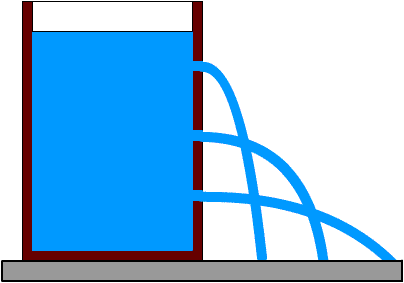
Water column pressure has been measured to have a value around 0.435 pounds per square inch (PSI) for every 1 foot of water. This means every 1 foot of water vertically filled in a container will provide 0.435 PSI. From this, even a 7 foot tall rainwater cistern will only produce a pressure around 3.0 PSI at its outlet.
The math and physics equation for calculating the hydrostatic pressure of water in a column such as a rain barrel or rainwater cistern is:
- p = 0.435 x h
- p = pressure in PSI
- 0.435 = PSI of water per 1 foot of height
- h = height of the water column in feet
Note, this equation has been simplified for water at room temperature and converted to units in PSI.
While the low pressure of 3.0 PSI may be enough to generate water flow through a hose, the flow rate will be painstakingly low, and certainly not enough to operate a typical garden sprinkler. In fact, it is not even near the recommended PSI for a soaker hose let alone a traditional hose, nor is the PSI anywhere near the water pressure common at taps, spigots, or required by appliances.
Low Water Pressure: How to Improve It
So how do we improve the water pressure from the outlet on a rainwater container? There are only two options. One option is to increase the container’s vertical height. The second option is to install a water pump.
Two ways to increase the water pressure from a rainwater barrel or cistern outlet:
- Increase the height of the container above the ground
- Install a water pump
Note, however, when you increase the height of a container above the ground, the water most often has to be pumped up to the container for storage, meaning the system will still require a water pump.
What If We Increase the Height of the Container Above the Ground?
When an object – water in this case – is located at height, it develops potential energy (remember grade school physics) due to the effect of Earth’s gravity and the distance of the object above Earth’s surface. In our example, let’s say the water tank is positioned 50 feet above the end use tap.
Due to height-gained potential energy, the water should leave the tank’s outlet and have a pressure around 21.7 PSI (0.435 PSI x 50 Feet) at its lowest point. After rising 4 feet to reach the kitchen sink tap, water should leave the faucet with only 20 PSI. The resulting 20 PSI is often not considered sufficient pressure for in-building use as 40 to 60 PSI is common for the municipal supply that provides water to homes and business taps.
What if Increasing the Height of the Water Container is Not Possible or Will Not Supply Enough Pressure?
In most cases and for most individual owners of a rainwater harvesting system, increasing the height of the rainwater container to produce adequate water pressure will likely not be plausible, possible, and/or cost effective. Also, most rainwater systems are designed to catch rain from a roof then transfer the water down through downspouts to a container located beneath the roof.
The best option and choice when needing to increase water pressure for a rainwater harvesting setup is to install a water pump. If stronger water pressure is needed because you want to run a sprinkler, have a long hose, plan to use the rainwater indoors, or will use the rainwater in business or agriculture, then a dedicated water pump or booster pump will be required and should be installed.
For more information, see our article on recommended water pumps for rainwater harvesting and where to install a rainwater harvesting water pump.
Common Water Pressures Required by Equipment, Appliances, and Taps
To better understand why and when a water pump is needed for rainwater harvesting systems and uses, it is helpful to know the water pressure often used in a home or business as well as the water pressures frequently required by common equipment, appliances, and taps.
In general, water pressure for these activities often ranges from 40 PSI to 55 PSI. Many applications will only work or work best when provided with water pressure in this range.
Low Pressure / High Pressure
Low water pressure can cause slow water flow, affect the volume of water received, or may not be sufficient for a tool or machine to properly work. For most regular water-using devices, a water pressure under 30 PSI is considered low pressure.
On the other hand, high water pressure can cause damage to pipe, fixtures, or equipment and should be avoided and prevented in all cases. For most water-using devices, a water pressure over 70 PSI is often considered too strong and could cause significant damage and could even lead to harm if a pipe were to burst or piece of equipment were to break.
A water pressure test gauge is a simple and low-cost device that can be used to see the pressure of water flowing from a pipe or hose. You can use a water pressure test gauge on the outlet spigot of your rain barrel or rainwater tank to find the PSI available for using the water.
Water Pressure of Water Supplied from a Municipality or Water Company
Water supplied by a municipality or water company is often between 40 to 55 PSI and can range from lows around 30 PSI to highs around 60 PSI.
Water Pressure Required or Common to Spigots
The water pressure common to spigots or faucets in a home or business varies and depends on several factors. However, we won’t get into this here. Instead, most spigots only require enough pressure to provide a satisfactory flow rate and overcome any vertical height from the water supply source to the spigot location.
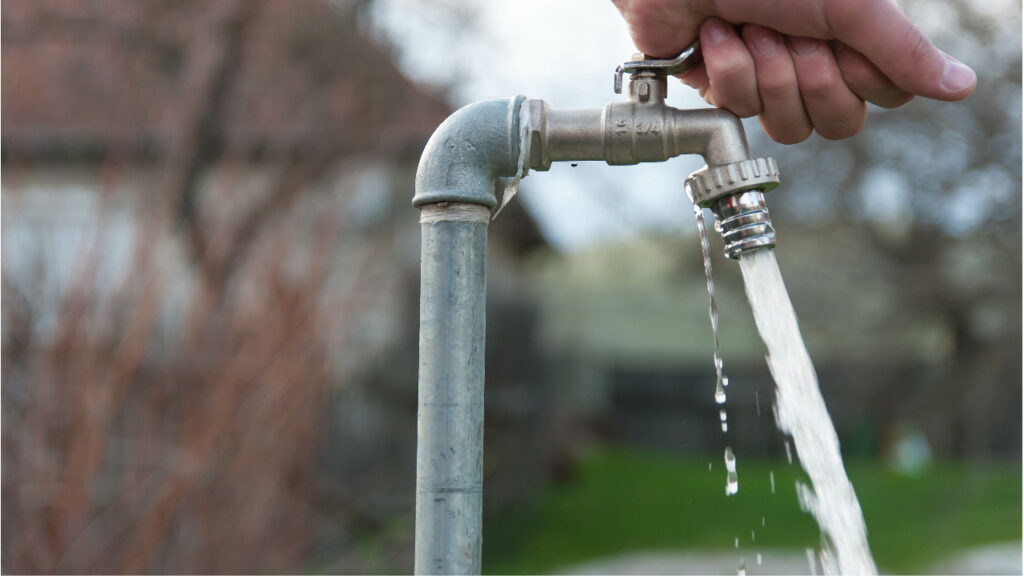
In most cases, a water pressure between 40 to 55 PSI is ideal for spigots at a home, business, or on a farm.
There isn’t a set pressure “required” by structural faucets and taps for running water. However, having a low water pressure will result in a very low flow rate and having a very low flow rate can make water-requiring activities difficult or ineffective.
Water Pressure Required by Hoses
The water pressure required by a hose will depend on the type of hose, width of the hose, and length of the hose. Two commonly used hose types are the garden hose and soaker hose.
Water hoses can vary in width from as thin as 1/2 inch to as thick as 2 inches or more. Typical hoses are often 5/8 inch in width. Here, hose width refers to the width of the inner diameter part of the hose where water flows through.
Hose length can vary from 25 foot hoses to 100 foot long hoses in residential settings, with much longer hoses often used in commercial or agricultural settings.
Hoses are used in rainwater harvesting for irrigation to water lawns, gardens, and food crops. Hose irrigation types include drip irrigation, surface irrigation, subsurface irrigation, and spray irrigation. The amount of water pressure needed may change with the irrigation method.
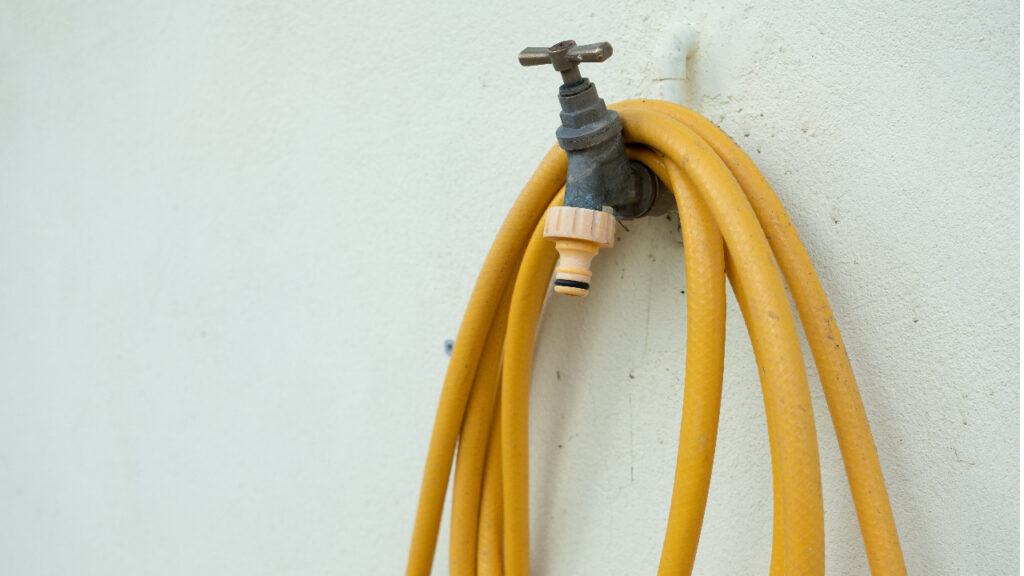
Hose Type: Garden vs Soaker
With hose type, when length is the same, traditional garden hoses will require more pressure to properly work than soaker hoses.
- Soaker hoses can require between 8 to 10 PSI to work properly. Some of this can depend on the length of the hose. The low water pressure requirement of soaker hoses makes them a great choice for use in rainwater harvesting systems that do not have a pump. However, without a water pump, the soaker hose may work more like a leaker hose as the rainwater system may not be able to provide the pressure needed for a soaker hose to work properly as designed.
- Garden hoses work best with pressures between 40 to 55 PSI. With that said, garden hoses only need enough pressure to allow water to flow from the start of the hose to the end of the hose. However, low water pressure can result in low water flow, which can lead to difficulties or long wait times when watering. For garden hoses fitted with a spray nozzle, a low pressure can cause the nozzle not to work, resulting in a drip nozzle rather than a shower nozzle. For garden hoses fitted to a sprinkler, low pressure will cause the sprinkler not to work.
With hose length, the longer the hose, the more water pressure that will be needed for sufficient water flow rate through the hose. When considering hoses, length, and water pressure, shorter length hoses are better for rainwater systems as they require less water pressure to generate an adequate, and usable, flow rate of water that doesn’t strain your patience.
How to Increase Water Pressure through a Hose
In general, there are three ways to increase water pressure through a hose.
1. The first option is to use a shorter hose. A hose that is shorter in length will provide less resistance to water flow, increasing pressure at the outlet.
2. The second option is to use a wider hose. A hose that is wider in diameter, similar to a shorter hose, will provide less resistance to water flow, which can effectively increase pressure at the outlet.
3. The third option is to install a water pump. Water pumps are designed to increase water pressure and flow rate. While a water pump may sound intimidating, there are many styles and options to choose from, and many are actually made for easy installation and use. See our article for more info on water pumps here.
Water Pressure Required by Different Irrigation Types and Methods
Hose irrigation types include drip irrigation, surface irrigation, subsurface irrigation, and spray irrigation.
Drip Irrigation: Drip irrigation refers to the use of hoses or pipes with holes in them to allow water to drip out along their length and irrigate plants along what is called the root zone. Drip irrigation is a low-volume, low-pressure method of applying water along lawns, landscapes, gardens, and crops and can be a great way of using water collected from rainwater harvesting. See how the USGS defines drip irrigation.

Surface Irrigation: Surface irrigation, sometimes called flood irrigation, is applying larger volumes of water over an irrigation area to be absorbed by the soil and can be a good option for harvested rainwater. Surface irrigation sometimes involves using gravity to allow water to flow along the ground’s surface from a high area to a low area. Surface irrigation may require lower water pressure but can often benefit from a higher water flow rate provided by a larger diameter hose or a water pump.
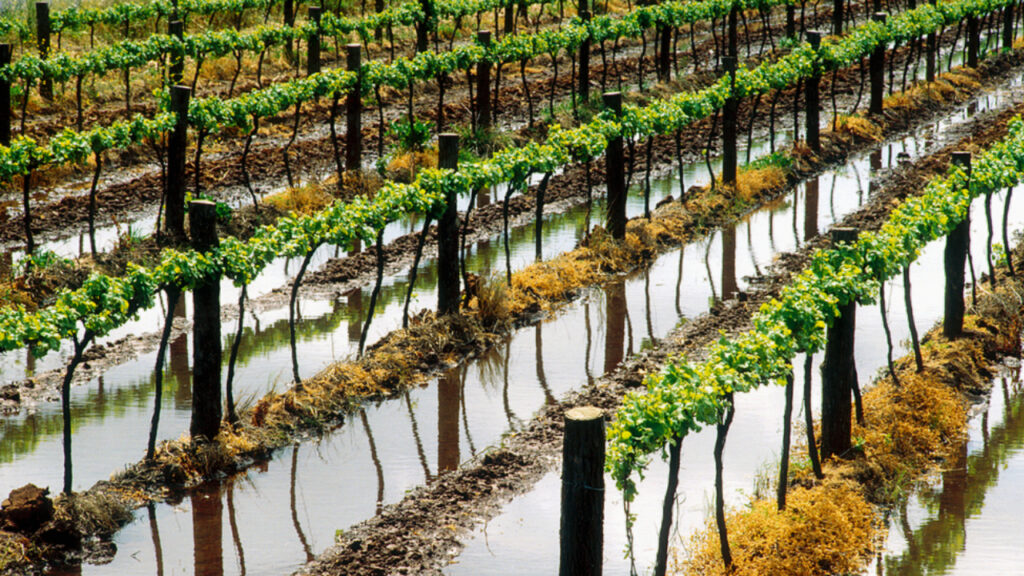
Subsurface Irrigation: Subsurface irrigation, sometimes called subirrigation, is similar to drip irrigation but hoses or pipes are buried just beneath the ground’s surface to apply water directly to the roots of plants. Subirrigation will require more water pressure compared to drip irrigation due to the plumbing being buried and the weight of the soil.
Spray Irrigation: Spray irrigation can refer to the use of a hose with a spray nozzle attachment, a typical lawn sprinkler, a sprinkler system, or a large agriculture-type irrigation system with a high-power spray nozzle or many spray nozzles. To use harvested rainwater in any of these spray irrigation systems will require a water pump to produce enough water pressure for the equipment to work. See how the USGS defines spray or sprinkler irrigation.
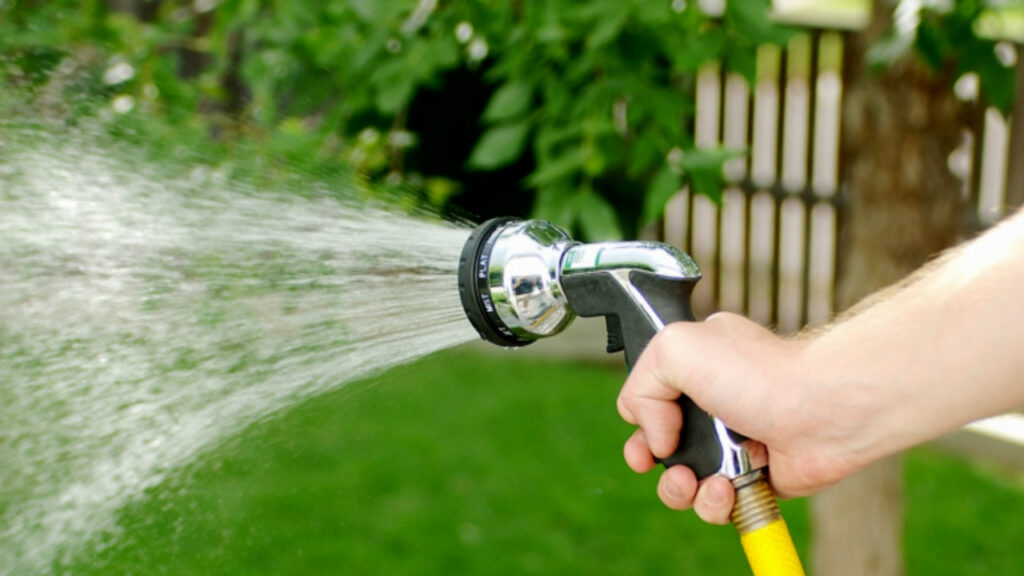

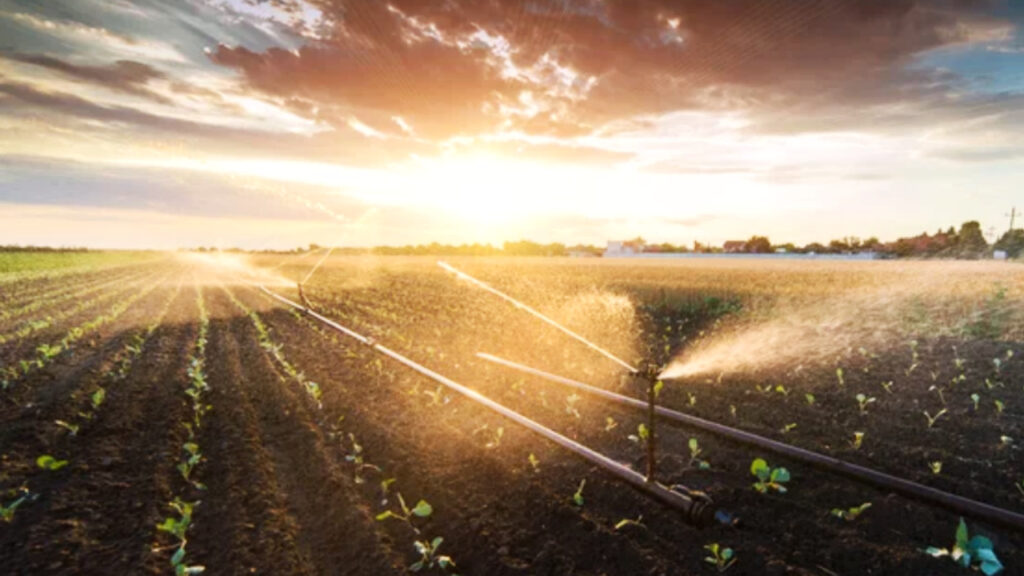
Water Pressure Required by Appliances Within a Structure
Most water-using appliances are engineered to need a minimum water pressure for the machine to properly operate. Examples such as dishwashers, washing machines, and hot water heaters require a minimum amount of water pressure to operate and perform their set jobs. These machines also have a maximum water pressure but as in most cases, limiting the water pressure rating to less than 65 to 70 PSI at the point of use is safe, smart, and ideal.
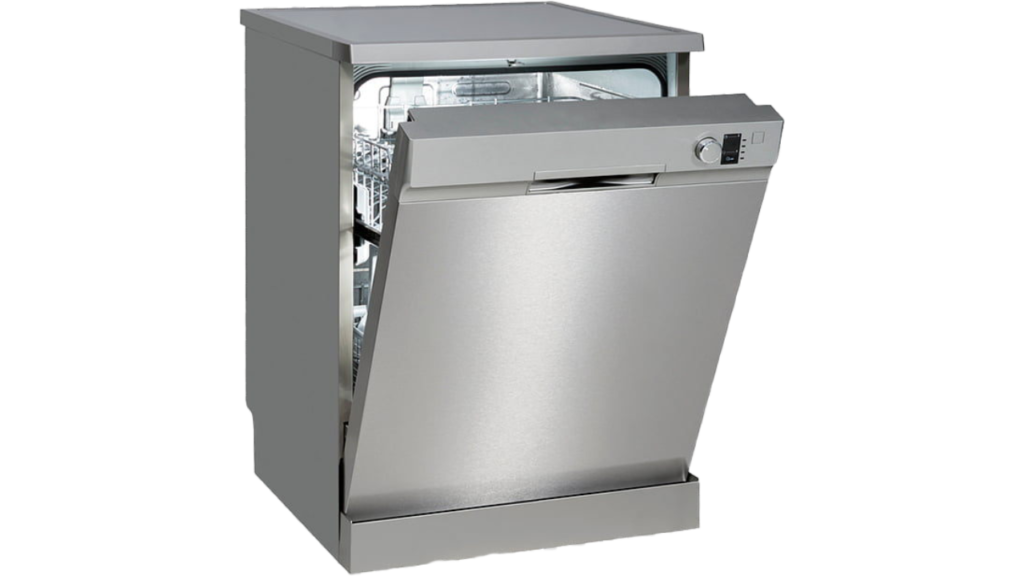
- Dishwashers need 20 PSI minimum to work for most brands and models.
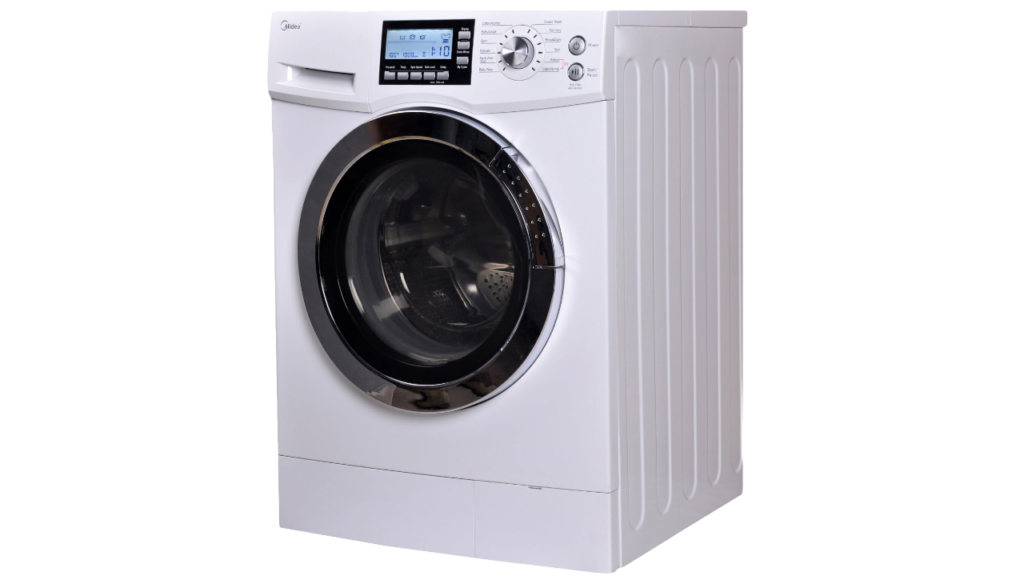
- Washing machines need 20 PSI minimum to work for most brands and models.
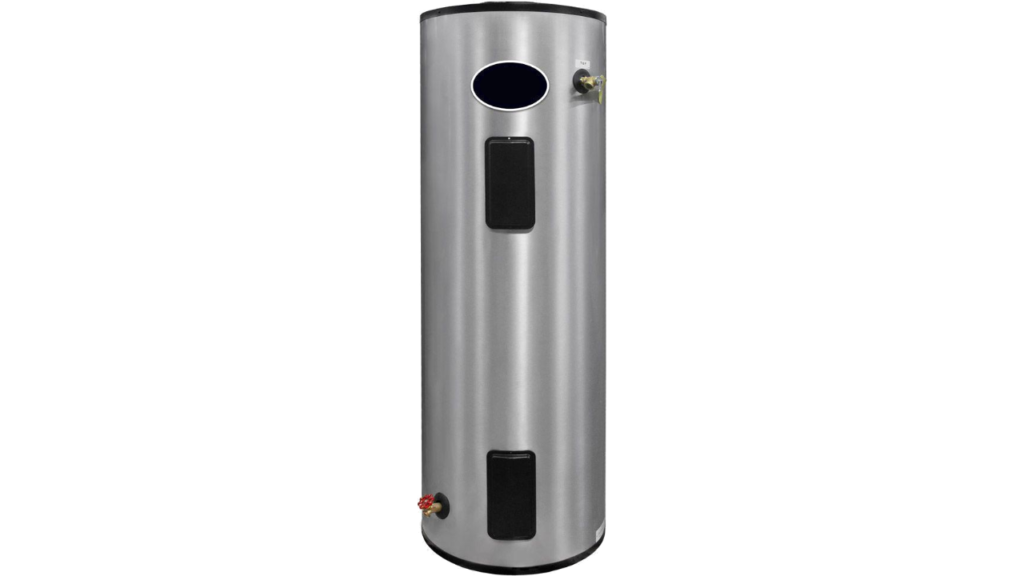
- Hot water heaters are recommended to receive water with a pressure between 40 to 60 PSI.
When a Pump Will Not Be Needed in Rainwater Harvesting
In brief, the list of activities where a water pump will not be needed in rainwater harvesting is much shorter than the applications that will require one. With this said, a water pump is recommended to be considered as an essential piece of equipment for most rainwater catchment systems and for the effective use of collected rainfall.
A water pump may not be needed in a rainwater harvesting setup when:
- A watering can will be used to water plants by hand
- A soaker hose will be connected to the container and used to irrigate lawns and gardens
- A drip irrigation method will be used with a fairly short hose, 25 to 50 feet
- A surface irrigation method will be used with a garden hose
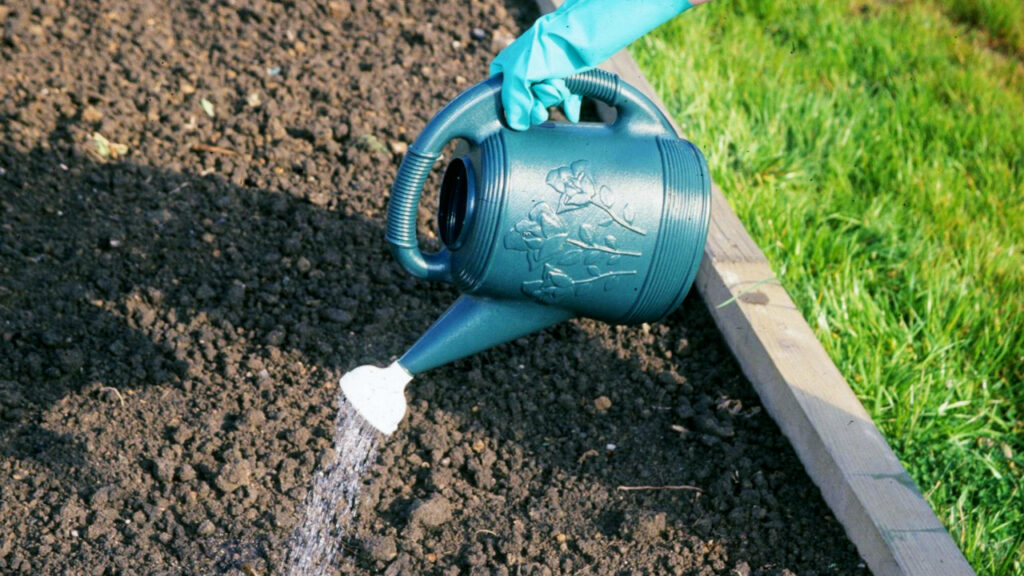
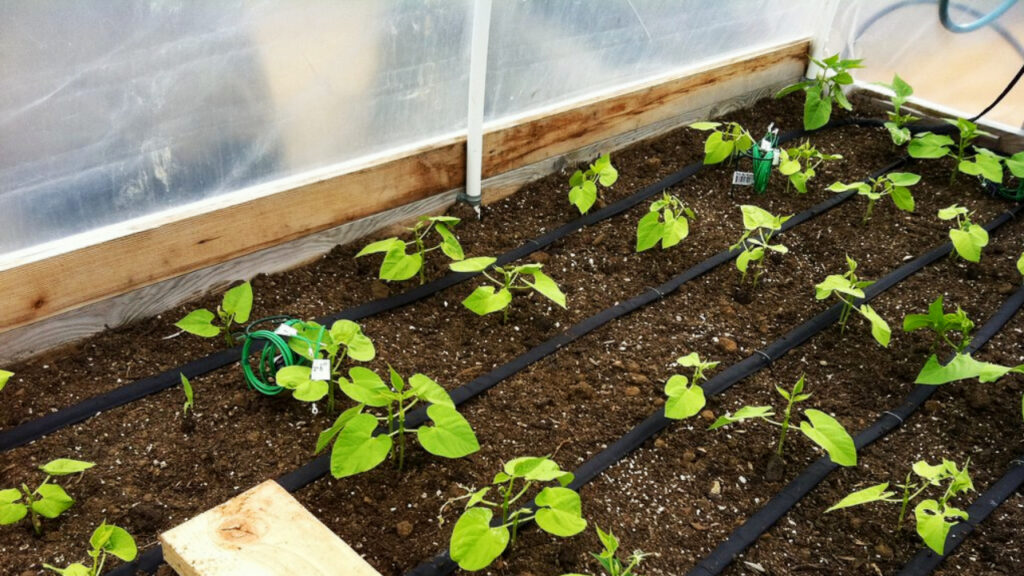
When a Water Pump Will Be Needed in Rainwater Harvesting
A water pump will be needed in rainwater harvesting for almost every scenario and application that requires a specified or adequate level of water pressure. The reason for this: the hydrostatic pressure provided by the water in the rain container will not produce pressures strong enough for most uses. Drip irrigation using short length hoses, soaker hoses, surface irrigation, and watering by hand can be exceptions. Every other use that rainwater can be used for will need a water pump to provide sufficient PSI to the fixture, machine, or tool.
Use a water pump in a rainwater harvesting system for:
- Indoor rainwater use in any application: potable or non-potable
- Sediment and/or cartridge filtration after the container
- Garden sprinklers and sprinkler type irrigation systems
- Spray type irrigation and hose methods
- Subsurface irrigation
- Large area drip irrigation systems
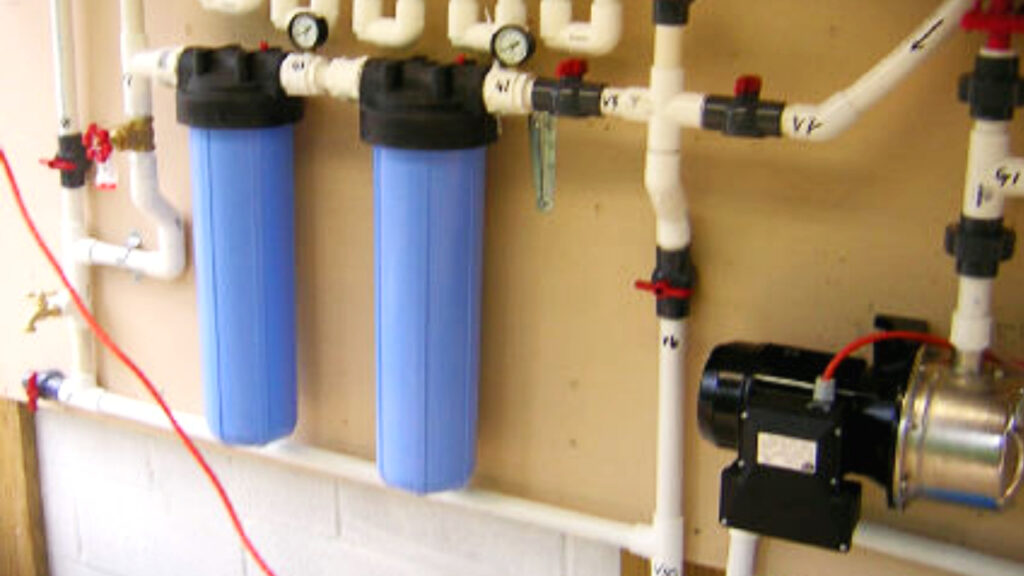
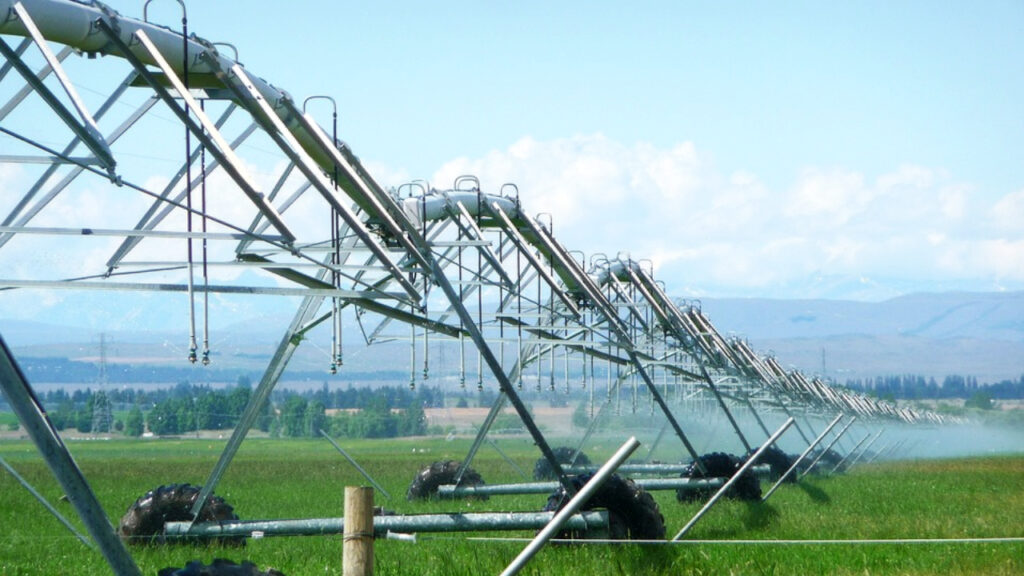
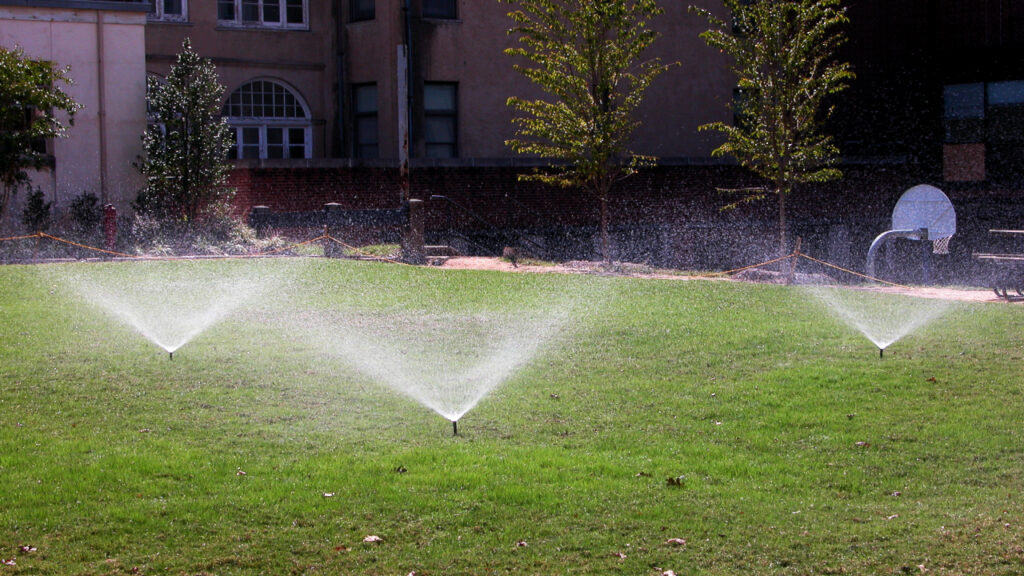
The recommendation to use a water pump is made because installing a rainwater catchment system at sufficient height to create the needed water pressure is more than likely improbable for most homeowners, business owners, farmers, institutions, organizations and the like choosing to practice rainwater harvesting. Indeed, rain capture and collection systems use gravity to channel rainfall into a storage container and moving the water to a container at height will also require a water pump.
Takeaway | When is a Water Pump Needed in Rainwater Harvesting
In many rainwater harvesting and use scenarios, a water pump will either be needed or recommended to achieve necessary water flow rates and pressures. When shopping or planning for a rainwater collection and use system, including a water pump is considered a good investment and one that is well-worth the cost. Not only do most outdoor water uses, and all indoor water uses, require enough water pressure to work, but all activities that use harvested rainwater can benefit from a water pump.
Adding a water pump allows water pressure and flow rate to be increased, which can make outdoor irrigation activities easier and quicker. For any rainwater application that requires an increase in water pressure, a water pump is not a choice, but a necessity and essential equipment for rainwater harvesting systems.
Consider our article on recommended water pumps for rainwater harvesting. You can find our available water pumps for sale here. We also recommend the company Sprayer Supplies and their wide selection of water pumps that can be used in rainwater harvesting, see their selection here. If you have any questions or need assistance, contact us, our support experts are always ready to help.

Water pumps for rainwater harvesting